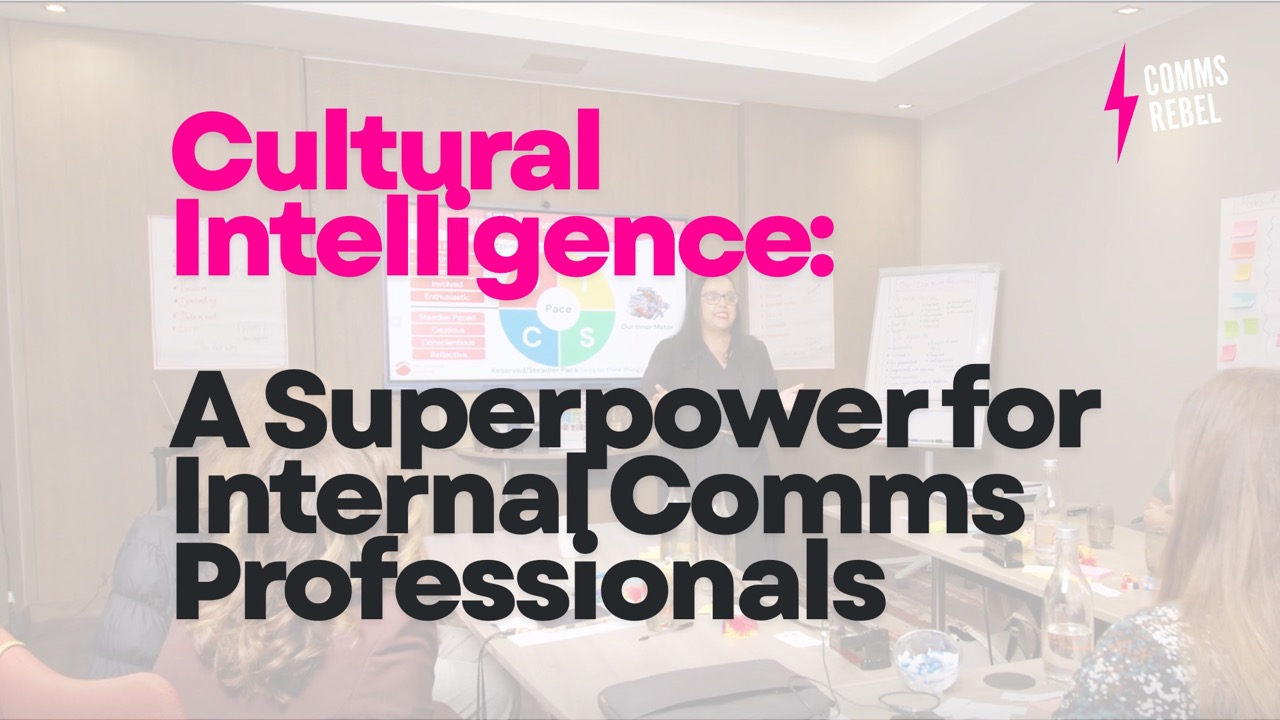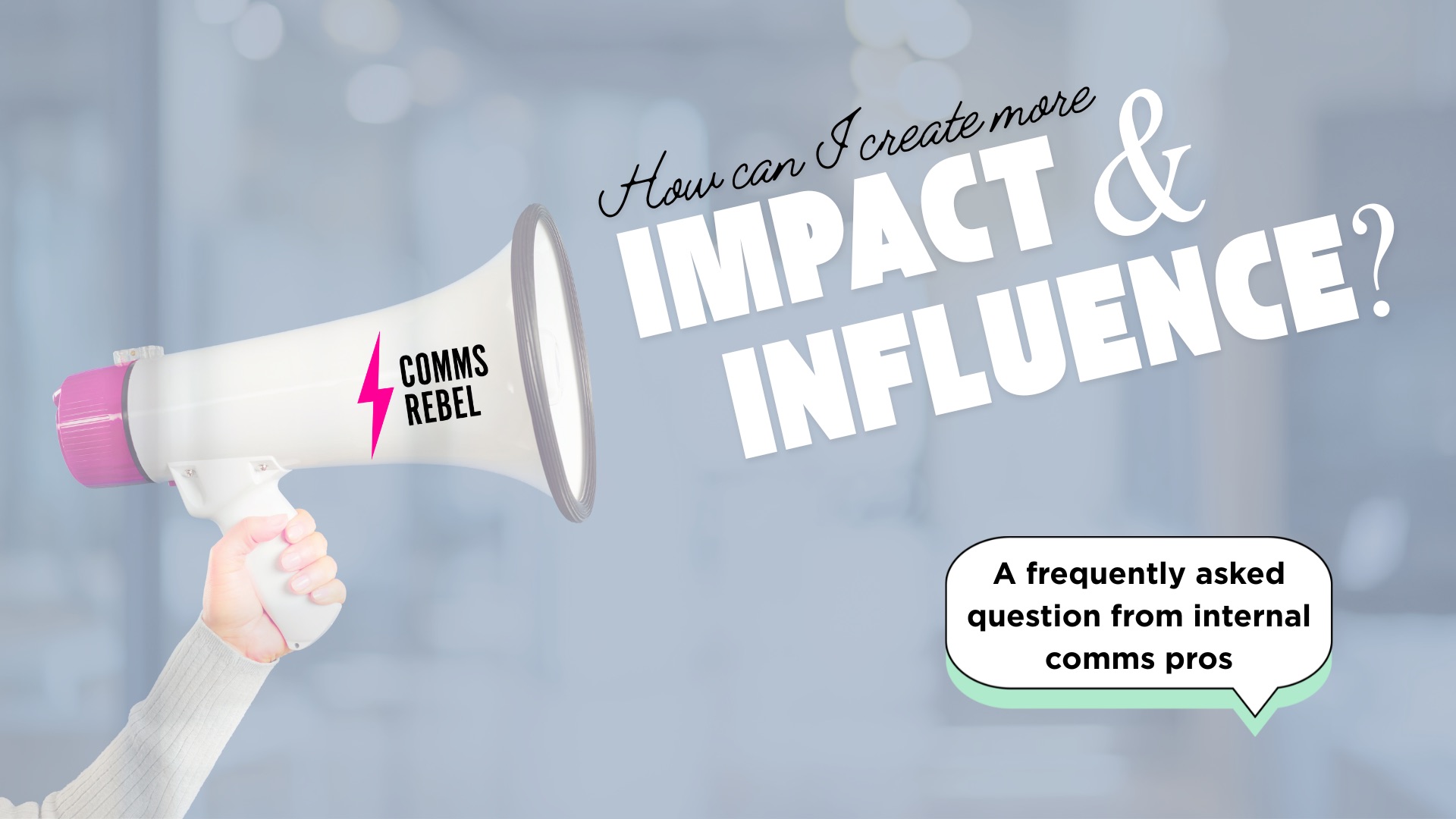Recently I’ve been involved in quite a few change programmes with clients. Throughout my time supporting these organisations I try to ensure that the communications we share with the workforce is as inclusive as it can be. Below are some top tips and techniques I hope help some of you who are working on change programmes.
Here are five steps to help you communicate organisational change in an inclusive way:
1. Understand the change.
The first step is understanding the change, inside and out so you know how communications can support it. You can start by asking curious questions. Why is this change taking place? What’s going on, and what impact will it have on the organisation and its population? What does the impact look like, and what are the objectives and outcomes? Do your due diligence, investigate the circumstances and have an open dialogue with those involved. If you don’t know the answer, the likelihood is that someone else doesn’t know the answer.
If you are the one expected to communicate this change and you’ve not been invited to be part of the conversation, get yourself a chair! I know it’s hard but insist on being included in the discussions, especially if you’re leading the comms. It’s also essential that you pay attention to how this change will affect those who don’t have traditional ‘office-based’ roles, such as frontline workers or folks working from home. These populations sometimes get overlooked and feel excluded as the channels are not often fit for purpose.
2. Understand the people.
After step one, do your stakeholder management plan, which should form part of your communications strategy. Stakeholder planning allows you to understand the who, when, what, where and how. This stakeholder map will tell you which colleagues and parts of the business need to be informed more than anybody else.
Take it further by thinking about accessibility in terms of language and the mechanisms of getting the information to your stakeholders. Think about what channels your population has access to. If some people don’t have laptops or internet access during their core hours, then posting on the intranet or sending an email will be tricky for them. Where do you need to put information, so they’re informed and included in what’s happening across the business? If you have part-time or flexible work on offer or people on parental, carers or sick leave? What does this mean for your communications?
It’s also important to remember that people often think inclusion involves absolutely everybody, and it doesn’t actually mean that. It means you’re being as inclusive and accessible as you can to the people who need to know the information.
3. Be consistent.
Make sure that even if you’ve got nothing to say, you say you’ve got nothing to say! You have to keep repeating yourself regularly, across different channels and ways. Silence will mean that people will make up their own stories and news, so try to avoid these gaps and make sure you have a single source of truth that’s accessible to everyone.
Once you’ve done the stakeholder map, communication plan and strategy, you should hopefully know how your population absorbs information. Do they prefer to read newsletters? Do they like screens? Do they listen to podcasts? When do they listen to this information? Is it during their breaks or throughout the day? Understand what this looks like in terms of your messaging and be consistent with it.
When you’re sharing messages across multiple platforms, amend the copy for the channel you’re using, don’t just lift and shift the same content to various channels.
Be clear about your calls to action. Is there a plan in place to respond diligently? If people are asking questions, don’t keep them hanging. Be honest; if the answer isn’t clear, let them know we’re looking into it and share an achievable and clear timeframe that you’ll get back to them. Be clear with this because nobody wants to be left hanging around.
Avoid jargon, unnecessary acronyms and unclear messages. This exclusive language can often alienate people. If you commonly use acronyms, explain them in the first sentence every time you use them. Remember the basics, like subtitles on videos and ALT text on images etc.
4. Remember face to face.
Don’t underestimate the importance of face to face communication, especially with hybrid working.
What does face to face look like in your organisation? If you’re sharing news and you have people working from home and people working in the office, think about the impact this is going to have and whether your comms prioritises one audience over the other.
Do you have to bring people into the office to share this news, or are you just going to do it online? In my experience, unless you have incredible technology that allows you to have conversations online and in-person simultaneously and clearly, it doesn’t work. Invest in the technology if you’re going to make a hybrid announcement and make sure everybody gets the information at the same time where possible as well.
5. Gauge feedback.
Once you’ve done; stakeholder mapping, communications plan and strategy, your channels are in place; you know when, where and how you’re going to communicate, and your message has been delivered; now, you need to give it a few weeks do a pulse check.
Here are some feedback questions to explore:
Are you engaging the right people at the right time?
Are people getting the information that they want?
Do they know where to go if they want more information?
Do they feel comfortable with what’s happening?
Do they need any advice or support?
Two-way dialogue during a change programme is often neglected, but it’s crucial. We communicate down the chain, and managers tend to take on feedback, but they don’t necessarily feed it back up.
Make sure there are available, accessible and inclusive mechanisms in place. Think about how people like to feedback, and again, if you’ve done your due diligence, you should know this. Is it best through email or an online form, and does everybody have access to these on their devices? Also, consider what mechanisms you have in place for verbal feedback.
Finally, involve people in making sure that future comms are fit for purpose and inclusive. Ask yourself and others if it’s adding value, and make sure that people aren’t unintentionally excluded because they don’t have access to the information or don’t understand some of the words because it’s too corporate or waffly!
Keep it clear, keep it concise, and keep it inclusive.


